Recent Posts
Click on any of the images or articles below to read more about native plants and their exceptional value and beauty in the landscape.
Looking for an article on something specific? Search for it below!
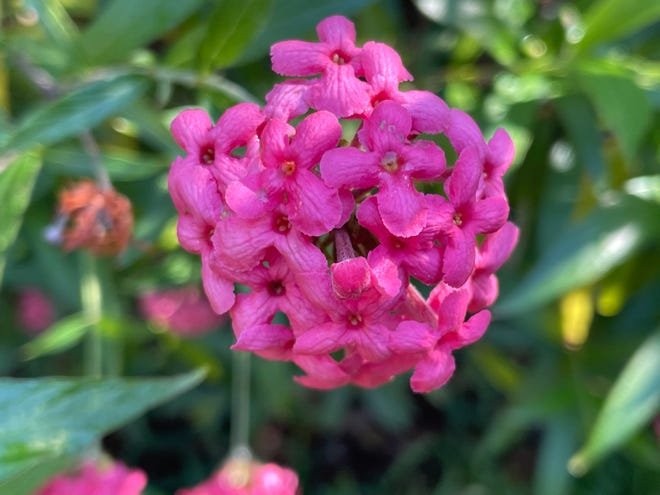
Native Florida plants provide my grandchildren with garden of wonders
While I’ll always miss the daffodils, tulips and peonies that are harbingers of spring in the Northeast, I am constantly delighted by the explosion of color in my native Florida garden.
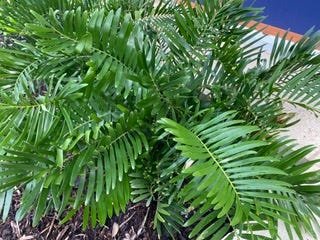
Letter to the editor: Plants native to Florida have numerous benefits
I would like to respond to the letter submitted by the landscapers in last Sunday’s paper ['Town's new native-plant rules are too onerous, need revision,' May 8 Palm Beach Daily News]. First of all, if we look at the big picture, I think we all want the same things: clean air, clean water and clean soil in which to grow healthy food.

Students show why every day should be Earth Day
The town of Palm Beach along with the Preservation Foundation, Palm Beach Day Academy and Palm Beach Public school students, the Palm Beach Civic Association, the Mounts Botanical Garden, and the Garden Club did an amazing job recently celebrating Earth Day.
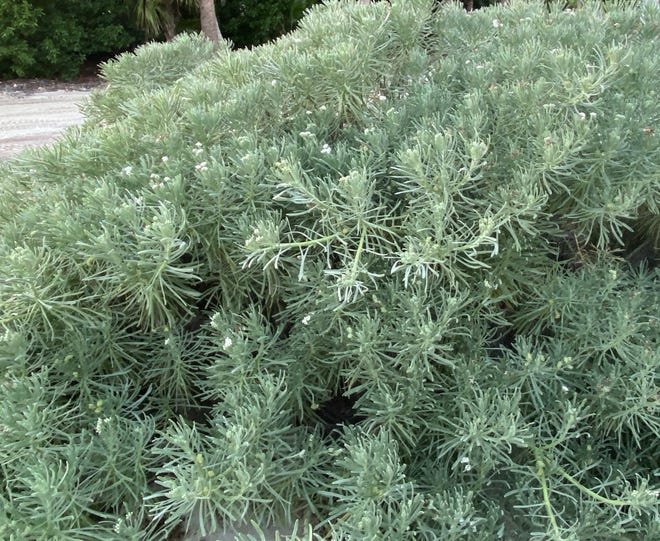
In our own backyards, we can help heal the planet
In E.O. Wilson’s book “Half-Earth: Our Planet’s Fight for Life,” this Pulitzer Prize-winning scientist — who died in December — reminds us that we are running critically low on clean water, fresh air, ocean bounty, rain forests, and the species of flora and fauna essential to maintaining life on earth.

The right plants will ensure the presence of pollinators in your garden
Spring blossoms and their accompanying pollinators are out and about, and to my mind, there is nothing more delightful than a vibrant garden alive with birdsong and butterflies.

Want to replace a ficus? Try these plants
When choosing a hedge — perhaps to replace your ficus — it’s important to first consider its location.
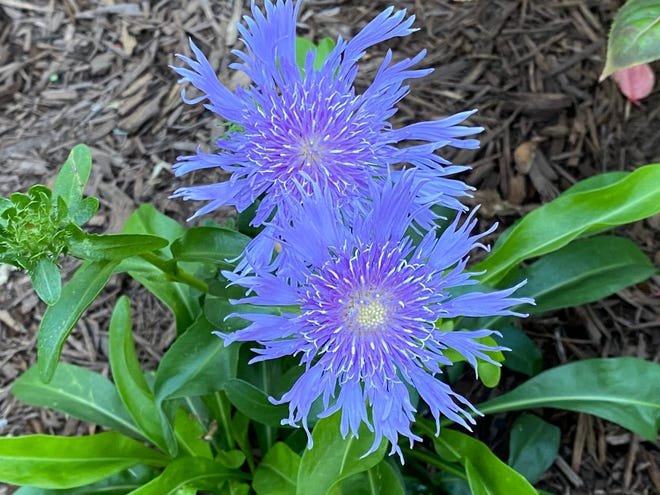
Add color to your garden with native plants
I question the complaint in last Sunday’s paper that native plants don’t offer enough variety for new landscapes, are hard to locate or don’t allow people the freedom to express themselves through their gardens.
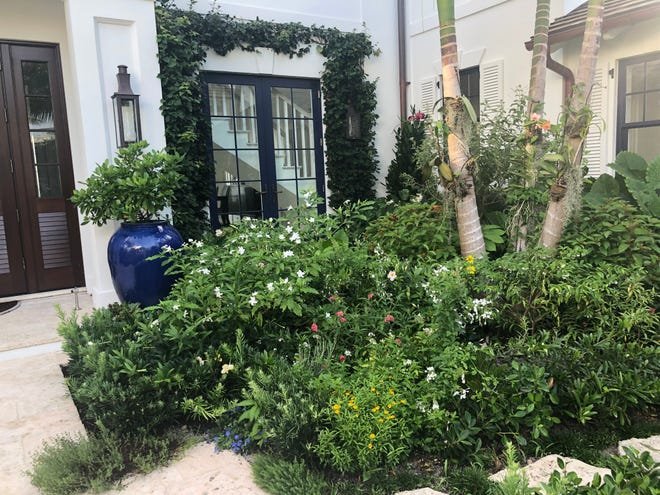
Pesticides kill more than just insects
The Federal Insecticide, Fungicide and Rodenticide Act regulates the registration and use of pesticides in the United States.
Last November, legislation was introduced to reform the core of this act. This bill, The Protect America’s Children from Toxic Pesticides Act of 2021 bans the most damaging and toxic pesticides scientifically known to cause significant harm to people and the environment.

Plant your own oasis with a native garden
When we moved into our home in the fall of 2020, there was a 50-foot-by-60-foot lot next to our loggia that had been the staging area for all the construction work at Via Flagler. Formerly home to massive cranes, trucks, Dumpsters and 16 Port-O-Potties, this scorched earth plot that didn’t look too hopeful for a garden site. But we started planting it last November and a year later, it has grown into a wonderful oasis full of pollinators, birds, butterflies and, recently, a few ruby-throated hummingbirds.
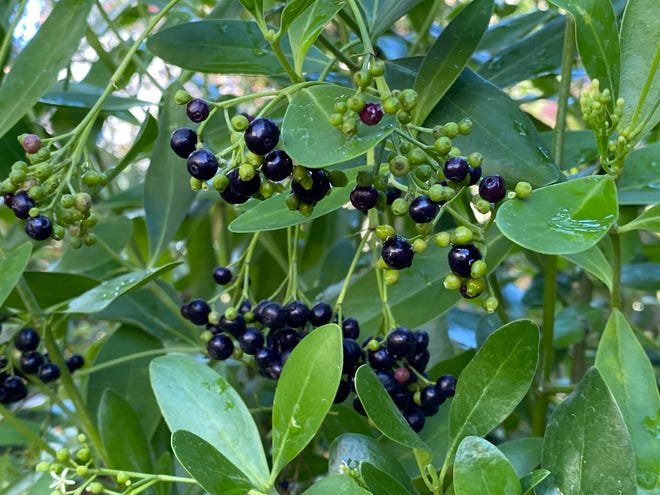
Enjoy the bounties of nature that native plants bring
I was delighted the other day to pass a bright sign outside a garden along the ocean proclaiming, “Native Plants bring Life to this Landscape.” The sign was outlined with pictures of cardinals, butterflies, coral honeysuckle, dune sunflower, gaillardia, and other native flowers, with the logo FANN, the Florida Association of Native Nurseries at the bottom. Peeking over the gate, I saw a mass of colorful natives thriving happily along the dunes. People are paying attention.
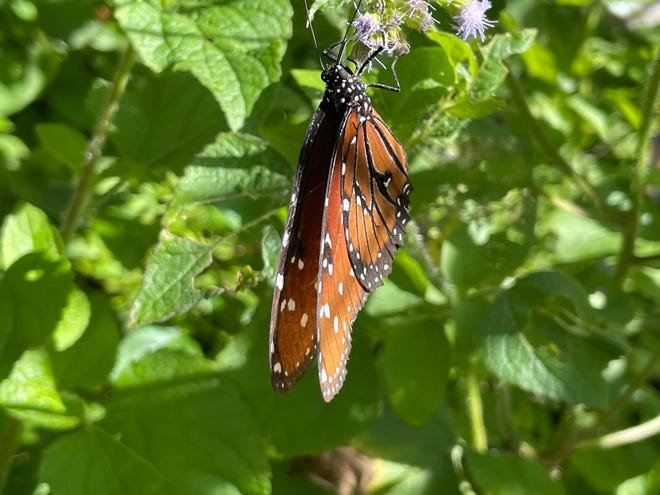
Mounts butterfly garden was festival of Florida native plants
Last weekend, I took my daughter and her two boys to Mounts Botanical Garden to see their wonderful butterfly garden. We were not disappointed.
There were deep blue atalas, reddish orange gulf fritillaries, marvelous black-and-white striped zebra heliconians, lovely white cassius blues, white dotted orange queens, yellow cloudless sulphurs, a variety of hairstreaks and skippers, and of course, lots of beautiful monarchs. Not only were there tons of butterflies, so many flowers were in bloom that the butterflies were continually landing right in front of us to sip nectar, giving us lots of photo ops and eliciting endless squeals of excitement from the boys.

South Florida fall flourishes with native plants
While fall symbolizes the end of the growing season in most of the country, it is just the opposite here in South Florida.
My garden is a mass of colorful bloom right now: red salvia, yellow coreopsis and cassia, purple beautyberry, white plumbago, pink lantana, blue ageratum, orange/red firebush and coral honeysuckle are just a few of the natives showing off their finery.
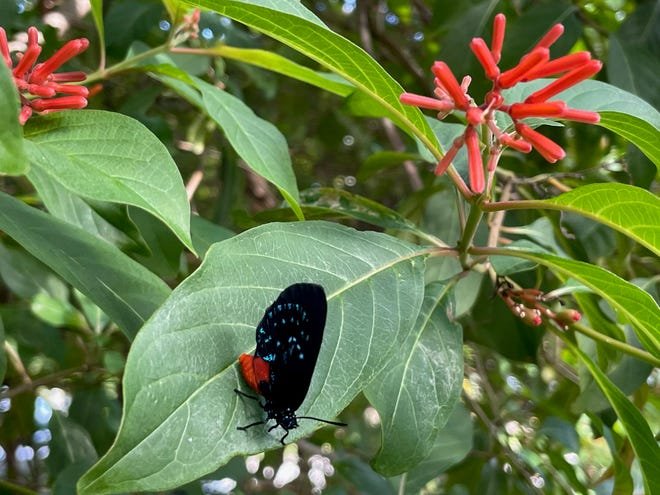
New plantings at Palm Beach park, marina should be applauded
The native plants used at the new Lake Drive Park and Town Marina will be a terrific addition to Palm Beach’s landscape.
Beds of coontie, silver buttonwood, sea grape, firebush, wild coffee, milkweed, muhly grass and orange geiger trees add beauty and diversity while providing essential food and habitat for birds and pollinators. This is the basis of a truly sustainable landscape. These plantings also underscore the need for proper understanding of plants’ growth habits and the difference between native and non-native species.

We saved a native butterfly; now let's save our soils
I was delighted on a recent visit to Pan’s Garden at the Preservation Foundation of Palm Beach to see a plethora of beautiful atala butterflies fluttering about.
Considering the atala was listed as “presumed extinct” as recently as 1968, it has made a remarkable comeback through the diligent efforts of dedicated naturalists and concerned citizens to re-establish its host plant, the coontie. The stunning blue/black atala butterfly was the most conspicuous insect in South Florida in 1888 when its only host plant, the native cycad coontie (Zamia integrifolia), was also in great abundance.
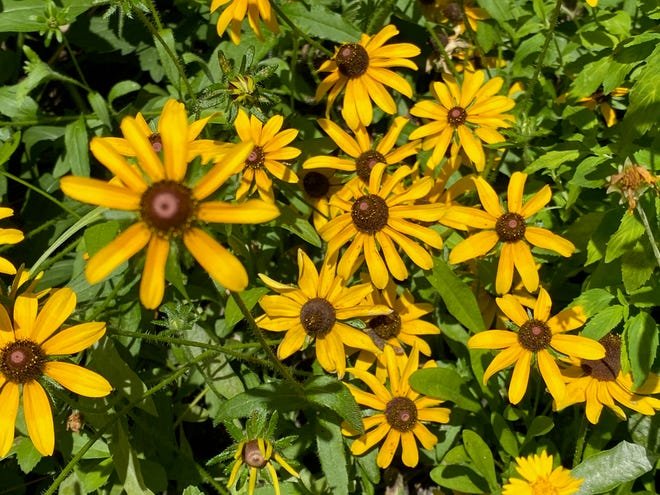
Spring color and environmental respect
This will be my last article for the season, so I thought I’d go over some of the important issues we’ve covered. But first, let’s celebrate the fabulous colors of spring in Florida.
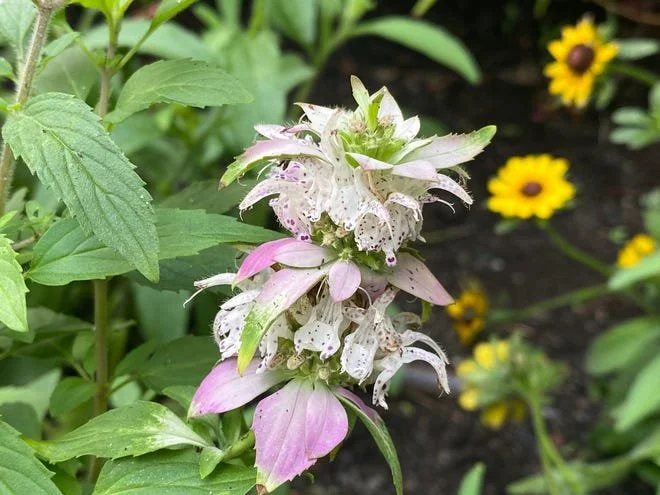
Follow your nose to these wonderful-smelling natives
It’s wonderful to smell a garden before you actually see it. And there are so many beautiful, native fragrant plants to include in any landscape.
Olfaction is the oldest and considered the strongest of our senses; its many functions include detecting danger and pheromones as well as imparting sensual pleasure and enhancing our sense of taste. It is one of the important means by which our environment communicates with us.
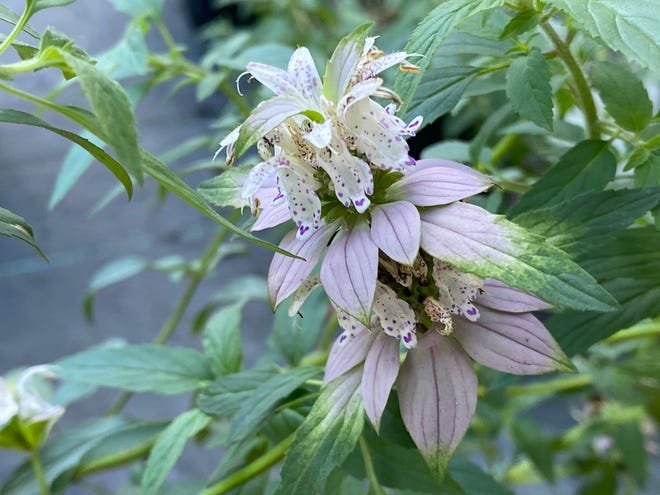
What's in a name? In gardening, it's important
I love getting up early and heading out to the garden to see what’s happening. Something’s always going on.
Palm warblers, mockingbirds, cardinals and grackles hop around the grass poking for grubs and insects. This is one of the bonuses of not using chemicals: birds do the work for me.
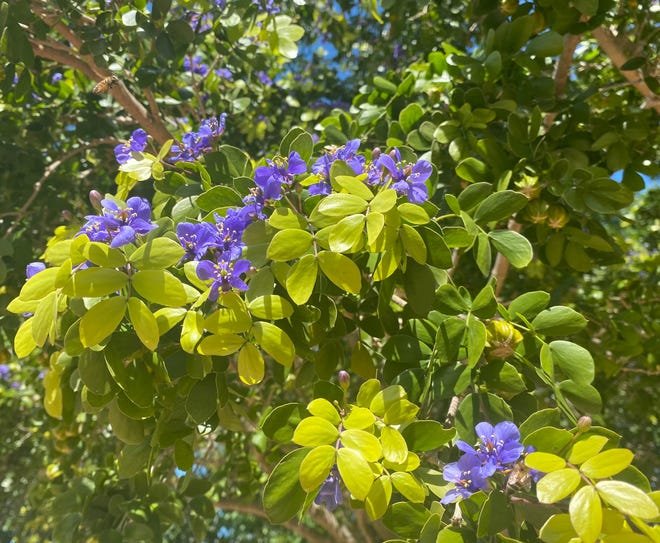
Make sure plants in your yard perpetuate native ecosystem
Back in fifth grade, most of us learned that plants take carbon from the air, and through the process of photosynthesis, convert it with sunlight into sugars and oxygen, enabling us all to survive.
Trees are carbon sinks, storing carbon absorbed from the atmosphere into their tissues where it remains for the duration of their lifespans, up to hundreds of years. Global forests, wetlands, grasslands and coastal habitats all sequester carbon, regulate global temperatures, recharge groundwater, anchor soil and act as flood barriers.
Welcome butterflies to your garden, and respect palms, too
We saw our first zebra longwing, or zebra heliconian (Heliconius charithonia), in the garden last week.
This distinctive butterfly with its long black-and-yellow striped wings was designated Florida’s state butterfly in 1996. Zebra longwings are the only butterflies known to eat both nectar and pollen, which probably accounts for their long lifespan: they can live up to several months, rather than the few weeks of most butterflies. The beautiful white caterpillar with its black spikes arranged in triplicate across the back is especially fun to find.
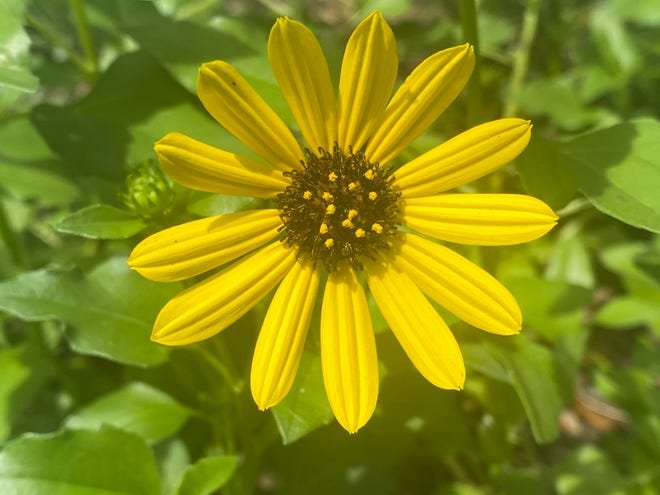
Gardening guru P. Allen Smith shows how French style builds great U.S. landscapes
The Society of the Four Arts, in conjunction with the Garden Club of Palm Beach, recently hosted P. Allen Smith’s interesting and informative lecture about his Moss Mountain Farm in Arkansas.
This ferme ornée, or ornamental farm, has its roots in the natural landscapes of the English era of Capability Brown, when the formal vernacular of the William and Mary period was replaced with the curvilinear features of the pastoral movement. Quite simply, the essence of ferme ornée is the marriage of functionality and beauty: combining farming techniques of vegetable and livestock production with the beauty of pastoral gardens..
